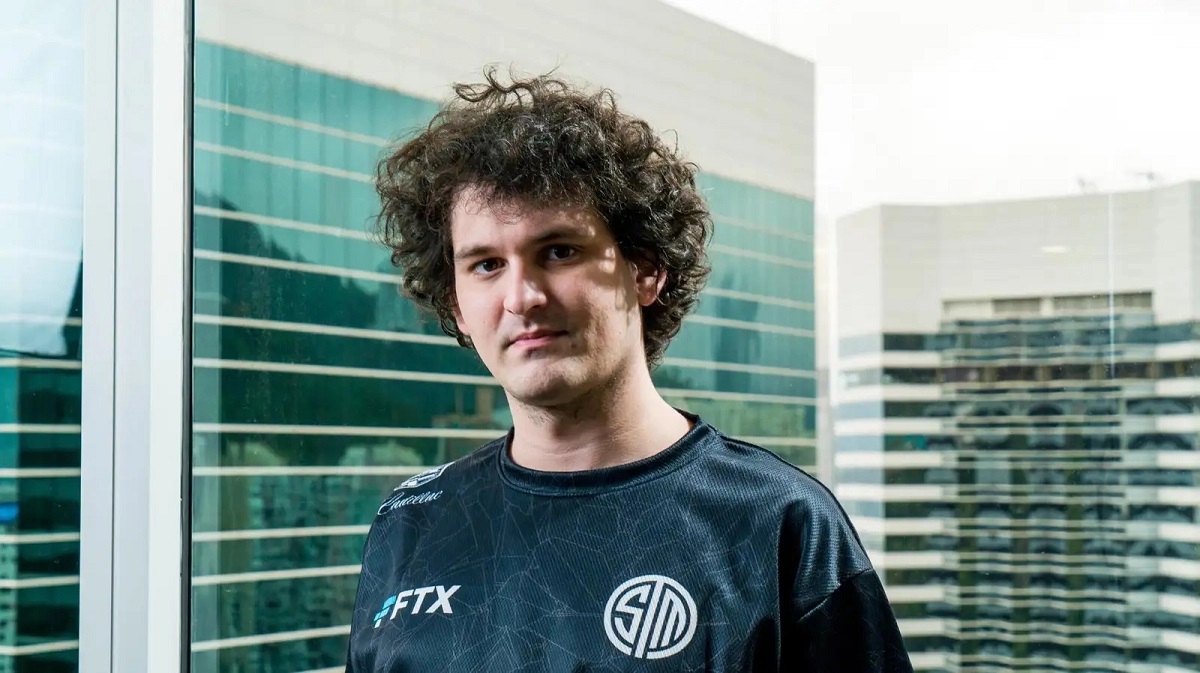Formerly regarded as the second best crypto exchange in the world, FTX had been on a mission to dominate the industry over the last three years. From esports partnerships, like its naming rights deal with TSM, to celebrity collaborations, FTX squeezed into everyone’s radar even if they weren’t interested in cryptocurrencies.
Founded in 2019 by Sam Bankman-Fried (SBF) and his friends, FTX has a deep history. Until Nov. 2022, FTX looked like a well-oiled machine and became the preferred exchange of many seasoned or rookie traders. The team behind the exchange had been together since 2017 under the roof of Alameda Research, where they profited off activities like arbitrage and market making. The Alameda team was considered to have the Midas touch since it was purportedly making enormous profits during its early days. Its early success opened the way for many partnerships ranging from esports to mainstream media.
When the band of traders decided to launch its own exchange, FTX, many people were happy to see another competitor in the market. But only a few knew the prodigal exchange was weaving its doom behind closed doors.
1) CoinDesk uncovers a balance-sheet hole at Alameda Research — Nov. 2
It was all rainbows and sunshine at the FTX’s Bahamas headquarters before CoinDesk revealed a worrying hole in Alameda Research’s balance sheets.
In a June 2022 report, Alameda was listed to have $14.6 billion in assets, a majority of them being FTT token, FTX’s native cryptocurrency. The two SBF firms should have been acting independently from each other, but CoinDesk’s scoop revealed they were very much tied together.
The fact Alameda’s future and present depended on FTX’s performance via the FTT token raised a lot of concern within the crypto community.
In addition to representing FTX’s overall value and performance, the FTT token is used to reduce trading fees on the exchange and during limited-time events, a very limited use case.
2) Binance, the world’s biggest crypto exchange, announces it decided to sell its remaining FTT tokens — Nov. 6
Selling FTT tokens basically means reducing exposure to FTX and Alameda Research. When Binance’s CEO, CZ, announced to the world that his exchange decided to sell all of its remaining FTT tokens, the world was only beginning to realize how impactful the balance sheet hole at Alameda could be.
3) A bank run on FTX begins — Nov. 6 to 8
With Binance wanting out of FTX and Alameda research, so did the world. Thousands of users queued up to take out their funds from FTX as withdrawal requests noticeably slowed down. While an average crypto withdrawal request takes around four minutes to clear, users found themselves waiting for hours to get their crypto off the platforms.
As the run on the bank continued, FTX’s chief executive SBF started defending his platform in a series of deleted tweets where he accused Binance and CZ of putting a target on their back. While lashing out at his main competitor, SBF also reassured users all of their funds were safe.
Only hours after these now-deleted tweets, FTX halted withdrawals, which would mark the start of its end.
4) FTX’s moment of desperation: a potential Binance merger — Nov. 8
With the ongoing bank run, FTX realized it was against a timer.
Only so many people could withdraw their funds in time, since FTX had $6 billion in liquid assets to cover all withdrawal requests. With the requests exceeding $6 billion, FTX was forced to pause all cryptocurrency withdrawals while its CEO was running around Silicon Valley to raise more funds for the exchange.
Despite SBF’s best efforts, not a single venture capitalist wanted in on FTX’s last-minute fund. This caused the exchange to go knocking on Binance’s door for help, a move many considered a total defeat for FTX.
Though Binance expressed its willingness to help its competitor, the No. 1 exchange only agreed on a non-binding letter of intent since it wanted to perform its due diligence by checking FTX’s books.
5) Binance scraps the FTX deal after taking one look at FTX’s internal books — Nov. 9
It took Binance less than a day to realize how deep of a hole FTX was in by checking out its books. The No. 1 crypto exchange announced it was walking away from its plans to acquire FTX on Nov. 9, in a way that confirmed the rumors of FTX being insolvent.
With Binance out of the picture, FTX’s native token, FTT, started plummeting in value; it was technically a useless token that was good for nothing at that point.
After backing out of the deal, Binance didn’t share any details per their NDA, but hinted FTX’s books were in shambles due to using FTT, their own technically made-up currency, as collateral.
6) FTX’s death by a thousand cuts — Nov. 10
After the Binance deal was canceled, FTX had no option but to accept defeat. Shortly after Binance backed out of the bail-out plan, SBF released a lengthy tweet on how he “fucked up” and gave a weak explanation of how his crypto empire fell apart.
Justin Sun’s TRON stepped into the picture with a complicated bail-out plan after Binance was no more, but this deal would only allow users to withdraw 20 percent of their funds due to highly fluctuating market rates.
7) A free-for-all looting commences — Nov. 10
Shortly after SBF’s good-for-nothing apology, FTX started processing withdrawals again in a suspicious way. Millions of dollars were getting siphoned off the exchanges to unknown addresses.
FTX’s explanation of the situation was that it had to process withdrawals of Bahamian citizens by law, but this was later declined by the Bahamian Securities Commission. This situation turned out to be one of the many backdoors FTX had in case of emergencies that allowed high-level employees to draw their funds.
As the looting started, known names from the crypto Twitter community bribed FTX employees to change their account’s verification status to Bahamas in an effort to save their funds before the empire collapsed on them. Telegram groups that were paying 10 cents on the dollar for FTX accounts were also created at this time, but tweets featuring bribes and promoting these groups were later deleted due to community backlash.
8) FTX’s assets get frozen, truth gets revealed — Nov. 10
Hours after the infamous FTX looting, the exchange’s assets were frozen by Bahamian regulators and Tether, a stablecoin provider. As FTX started losing access to its assets, the looting stopped and the exchange tried to play off the situation as a hack.
With regulators stepping into the picture, the users’ hopes of retrieving their funds were no more since a lot was discovered during this time. Community reports showcasing that FTX had been lending user funds to Alameda surfaced, meaning it wasn’t a simple run on the bank that had caused their downfall.
FTX turned out to be frauding its users since its Terms of Service specifically said all user funds were stored separately. If FTX was doing right by its ToS, all users would still be able to withdraw their money even if FTX were bankrupt, which it became in a day.
9) FTX files for Chapter 11, declares bankruptcy, FTX.US bites the dust — Nov. 11
FTX’s downfall was officially confirmed when the company announced publicly it was bankrupt alongside 130 other subsidiaries.
The bankruptcy announcement came with another apology from SBF, where he was still painting the picture that he didn’t know what was going on. As a part of the process, SBF removed himself from the CEO position, which was taken over by John J. Ray III, a lawyer known for liquidating Enron.
Shortly after the announcement, withdrawals at FTX.US, a separate entity, were also paused, meaning more users were now affected by the situation.
10) Fears of contagion and sponsorship fallouts — Nov. 12
Fear took over the crypto world as FTX, who was thought to be a giant, fell. Many users continued to rush toward the exits of their favorite exchanges, spreading the fear of contagion.
Other exchanges acted quickly to release proof of reserves and user funds to take control of the situation, but some still had to pause withdrawals momentarily to keep the situation under control.
While the crypto community was busy licking its wounds, there was also another problem concerning many other industries, the countless sponsorship deals involving FTX. From sponsoring sporting events to esports clubs, FTX’s name was all over the place.
As FTX was declared dead, TSM and many others announced their partnerships with the ex-crypto giant were suspended. The exchange’s logo was taped off from jerseys and organizations suddenly found themselves on the market for new sponsors.
11) Community detectives emerge — Nov. 12 to 14
After FTX officially became ash and other crypto exchanges disbursed all concerns, it was time for the crypto world to heal. With prices plummeting and countless users strapped of their funds on FTX, the community only had each other for support. While some decided to take time off from the crypto world, others dusted off their inspector kits to find out more about what FTX had been up to.
Investigations revealed at least $1 billion of client funds were missing at FTX.
The situation had been going on for a while and it was only getting worse as multiple crypto projects were diminishing in value during the crypto bear market. When increasing liabilities were combined with a reduced income, FTX turned into a ticking time bomb that exploded in the first week of November.
FTX’s semi-liquid and illiquid assets didn’t have much credibility either as they were basically altcoins that had almost no volume, meaning they couldn’t be turned into hard cash as there weren’t enough buyers.
12) Sam Bankman-Fried tries to explain himself — Nov. 14 to 16
As all the events surrounding FTX were winding down, CEO SBF resurfaced with a series of cryptic tweets. While he was busy telegraphing another apology on Twitter, his private messages with journalists were published as an interview.
In the shared DMs, SBF disclosed his public persona has been a lie and he was still raising a fund that would make users whole despite resigning as CEO and after FTX’s bankruptcy.
Though SBF filed FTX’s bankruptcy papers himself, it looked like he was trying to fight it. In the midst of SBF’s tweets, the new FTX management also released a statement where it clarified that SBF had “no ongoing role at FTX.”
13) The new FTX management is baffled by the company’s mismanagement — Nov. 17
Six days after FTX’s official bankruptcy, the new management released its initial findings and comments.
FTX’s case was taken over by some of the most experienced restructuring law and advisory firms that have handled countless bankruptcy cases. Knowing the firm was in experienced hands gave investors some comfort, but what they would uncover was disturbing at best.
“Never in my career have I seen such a complete failure of corporate controls and such a complete absence of trustworthy financial information as occurred here.” John J. Ray III said. Other findings showcased that FTX didn’t even have a list of its bank accounts, and also lacked a list of employees, meaning there was no way to determine who was officially working at FTX.
Employees were paid through unconventional ways, and the firm was basically run through Signal chats on auto-delete.
14) A light at the end of the tunnel — Nov. 20
FTX’s new management continued to share their findings on Nov. 20 where they disclosed FTX had solvent and regulated entities under their roof.
FTX announced that it would pursue the “sales, recapitalizations or other strategic transactions with respect to these subsidiaries,” in the upcoming weeks in an effort to preserve the franchise’s value as much as possible.
15) Former FTX CEO SBF doesn’t agree with the bankruptcy filing and comments on the future of users’ funds — Dec. 1
Weeks after the incident, SBF commented on FTX’s downfall in an interview. The failed exchange’s former CEO claimed that both the US and International entities of his brand would be fine if he hadn’t filed for bankruptcy.
SBF also added that if nothing were to happen from now on as the bankruptcy process unfolds, FTX US users could expect to receive their money fully while FTX International customers could receive 20 or 25 cents per dollar.
16) Sam Bankman-Fried gets arrested by Bahamian authorities as SEC charges the former FTX CEO with defrauding investors Dec. 13
SBF had been on a media tour since his exchange went down, and more he talked, more backlash was sparked. With the combination of reports shared by FTX’s current CEO, John Ray III, and users demanding justice, SBF was finally arrested by Bahamian Authorities after the United States sent a formal notification. FTX’s former CEO is currently looking at various charges.
17) Riot is taking FTX to court, looking to abruptly end 7-year deal following alleged ‘reputational harm’ — Dec. 17
Amidst FTX’s fall, Riot Games found itself trapped in a 7-year sponsorship deal. The developer is now taking FTX to court to terminate the deal due to reputational harm.
18) Caroline Ellison and Gary Wang plead guilty, sharing more details of the fraud — Dec. 22
FTX’s former CTO Gary Wang and Alameda’s former CEO Caroline Ellison pleaded guilty to federal charges. The two are also cooperating in the case against SBF including admitting to stealing billions from FTX customers.













Published: Dec 26, 2022 09:38 am